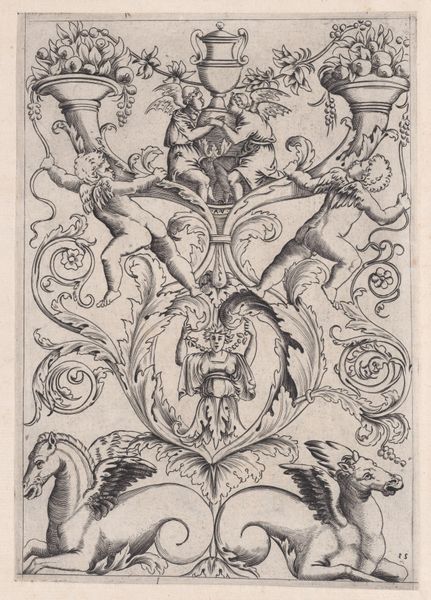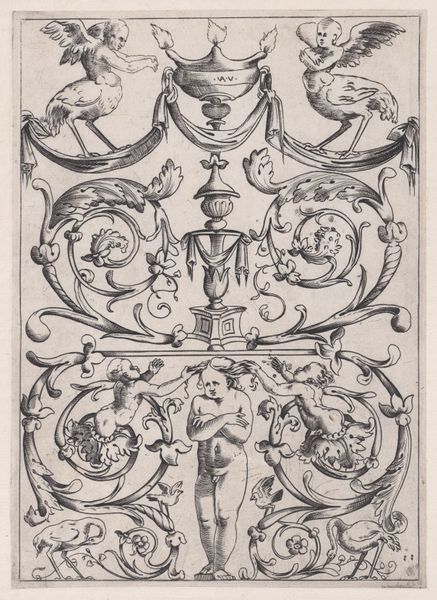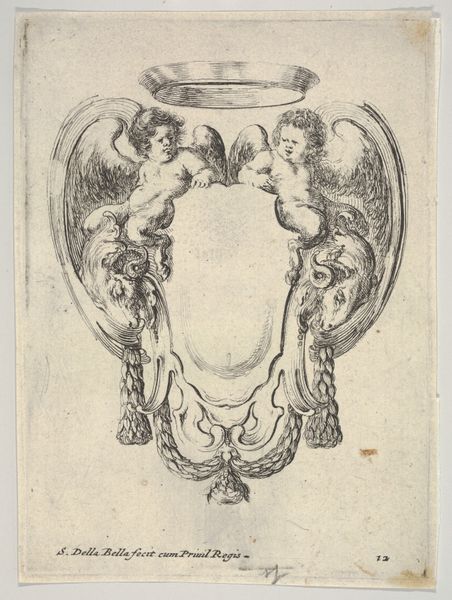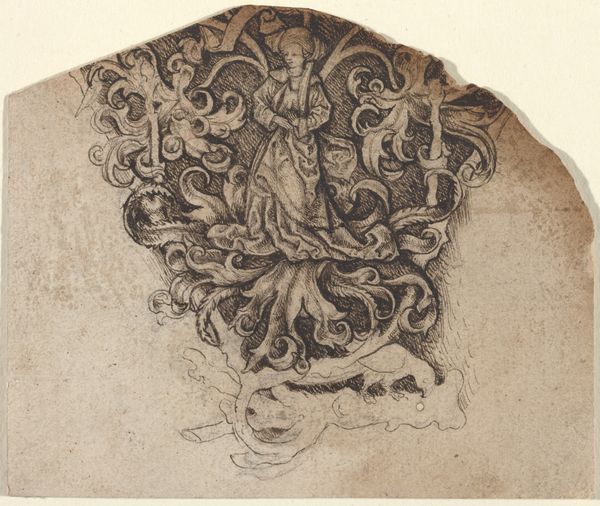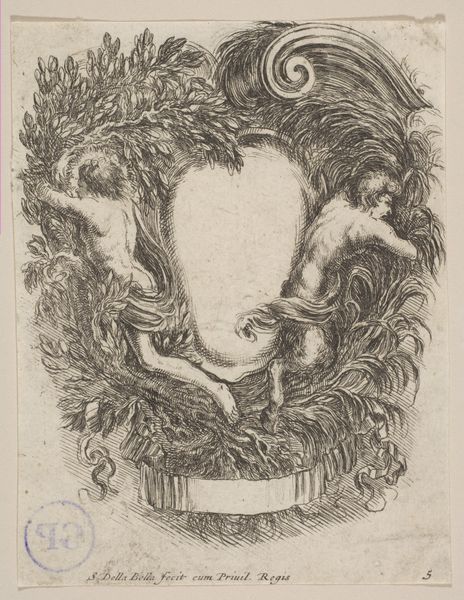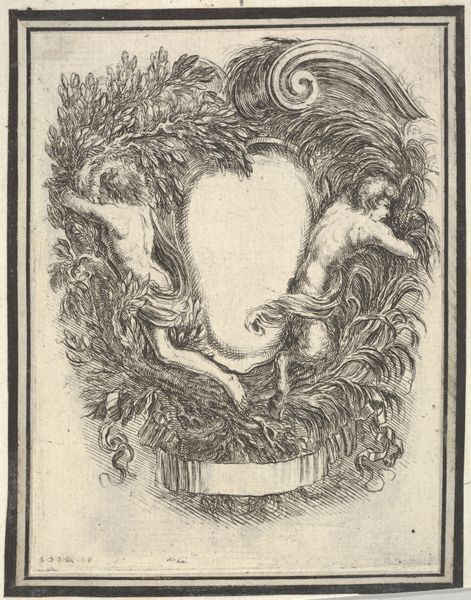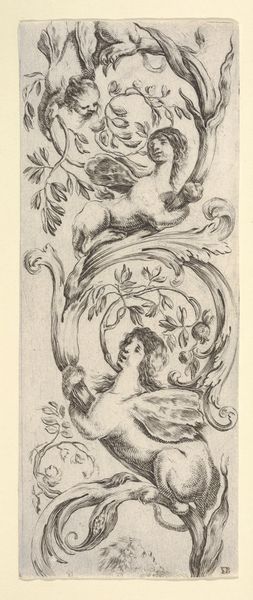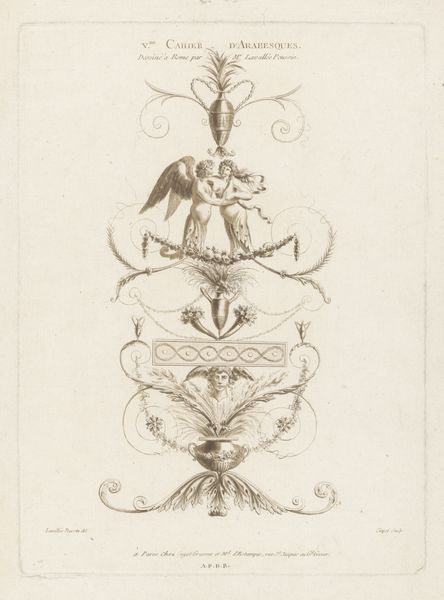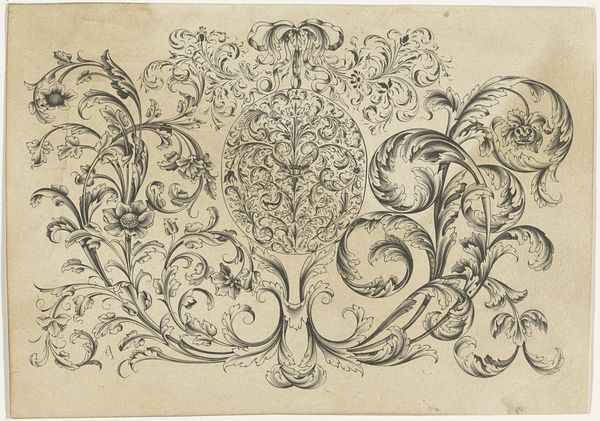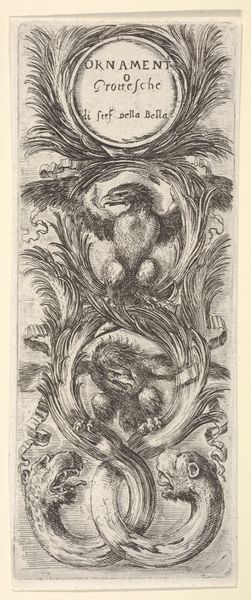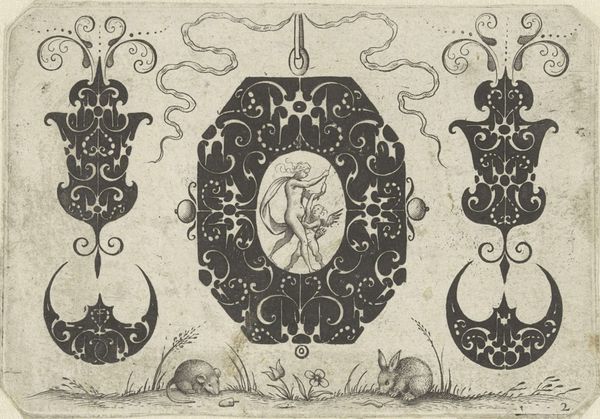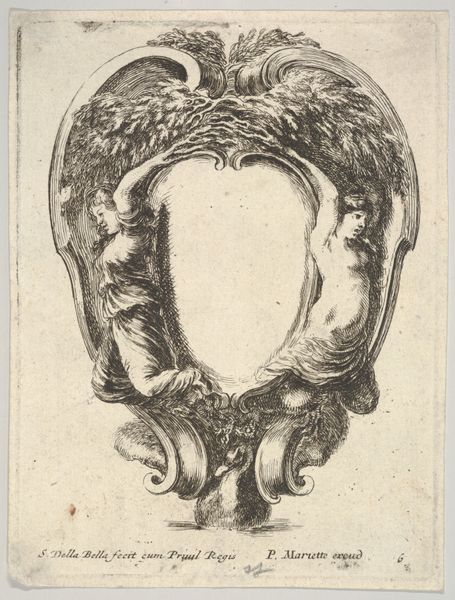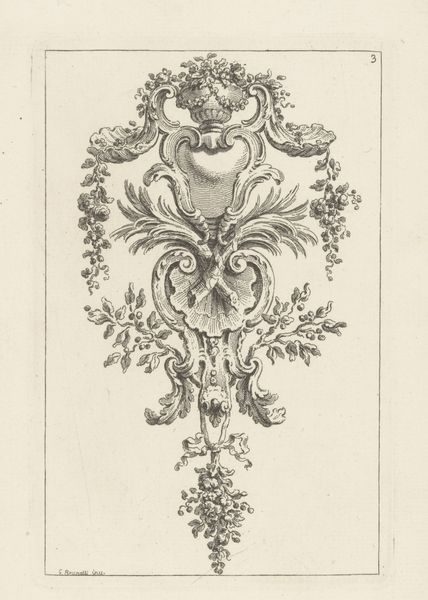
Coat of Arms of a Cardinal of the Sampieri Family 1590 - 1595
0:00
0:00
drawing, print, engraving
#
drawing
#
baroque
# print
#
form
#
geometric
#
line
#
engraving
Dimensions: 5 1/2 x 4 1/8 in. (14 x 10.5 cm)
Copyright: Public Domain
Editor: This engraving, “Coat of Arms of a Cardinal of the Sampieri Family” by Agostino Carracci, dates from 1590-1595. The central image of a dog-like creature looks poised and self-assured. What statements were intended for those who viewed it? Curator: It's interesting that you read its posture that way! This piece performs symbolic work. A coat of arms functioned as a public declaration of power and lineage. Notice how the visual language intertwines religious authority – indicated by the tassels of a cardinal’s hat, suggesting status – with familial pride, represented by the central emblem. It invites questions. Who benefits from these visual displays of power? How does this affirm social hierarchies? Editor: So, it’s not just about artistry, it’s about the politics embedded in the image? Curator: Precisely! It asks us to think about the function of art within structures of power. Consider how identity and authority were carefully constructed and disseminated. Think of the choice to display the Sampieri family crest. This announces their place within Bologna’s societal structure at the end of the 16th century, right? Editor: It's about controlling the narrative. Curator: Exactly. Visual displays were tools. The symbolism reflects not only individual and familial status, but also reinforces existing power structures. Why claim status instead of just earning it? Editor: So it becomes a dialogue on status through art, that remains open ended in our era. Curator: It provides an invaluable way to understand the dialogues surrounding identity, privilege and authority. It's a study in how art can simultaneously reflect and perpetuate systems of inequality.
Comments
No comments
Be the first to comment and join the conversation on the ultimate creative platform.
